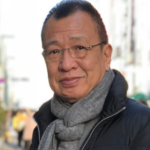In only the fourth such case, a guy who has had HIV since the 1980s appears to have been healed, according to medical professionals.
To treat his blood cancer, leukaemia, he had a bone marrow transplant from a donor who had built-in viral resistance.
The 66-year-old has stopped taking HIV medicine and does not want to be named.
The individual is referred to as the “City of Hope” patient after the Duarte, California, hospital where he received treatment.
Before antiretroviral medications could allow people to live close to normal lifespans, many of their acquaintances passed away from HIV.
The immune system of the organism is harmed by the human immunodeficiency virus (HIV). Acquired immunodeficiency syndrome (Aids) and the body’s difficulty warding off infection may result from this.
The man’s medical team determined that a bone marrow transplant was required to replace his malignant blood cells. By chance, the donor was HIV-resistant.
The virus enters our body’s white blood cells through a tiny entryway made of the protein CCR5.
Some individuals, like the donor, however, have CCR5 mutations that slam the door shut and keep HIV out.
After the transplant, the City of Hope patient was under close observation, and his body’s HIV levels vanished.
He has now spent more than 17 months in remission.
When Timothy Ray Brown, often known as the Berlin Patient, became the first person to be cured of HIV, it first occurred in 2011.
In the last three years, there have now been three comparable cases.
The patient at the City of Hope is the oldest recipient of this type of care and has had HIV for the longest combined.
However, for the 38 million people worldwide who are currently infected with HIV, bone marrow transplants won’t revolutionise therapy.
However, as a potential cure, researchers are investigating how to use gene therapy to specifically target the CCR5 entryway.
At the Aids 2022 conference in Montreal, Canada, the case was discussed.
Prof. Sharon Lewin, the president-elect of the International Aids Society, commented on the findings, saying: “A cure remains the Holy Grail of HIV research.”
There had previously been “several individual cure instances,” according to her, and they had “continued to inspire the scientific community as well as people living with HIV.”











More Stories
AI to assist doctors in detecting broken bones in X-rays
Enhancing digital health initiatives could help prevent millions of deaths from noncommunicable diseases
Sweden Confirms Its First Case of Mpox